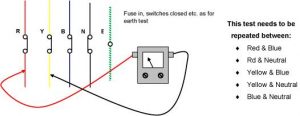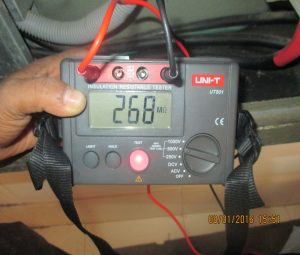Cable Insulation Resistance Test Measurement Process
The Cable Insulation Resistance Test (IR) test (also commonly known as a Megger) is a spot insulation test which uses an applied DC voltage (typically either 250Vdc, 500Vdc or 1,000Vdc for low voltage equipment <600V and 2,500Vdc and 5,000Vdc for high voltage equipment) to measure insulation resistance in either kΩ, MΩ or GΩ.
The measured resistance is intended to indicate the condition of the insulation or dielectric between two conductive parts, where the higher the resistance, the better the condition of the insulation. Ideally, the insulation resistance would be infinite, but as no insulators are perfect, leakage currents through the dielectric will ensure that a finite (though high) resistance value is measured.
Firstly ensure that the equipment to be tested and the work area is safe, equipment is de-energized and disconnected, all the relevant work permits have been approved and all locks/tags in place. Next, discharge capacitances on the equipment (especially for HV equipment) with static discharge sticks or an IR tester with automatic discharging capabilities. The leads on the IR tester can then be connected to the conductive parts of the equipment.

Standards
(A) Bangladesh National Building Code 2006 – Appropriate Sections
(B) Bangladesh Electricity Rules 1937 – Appropriate Sections.
(E) Alliance Fire Safety Standard – Appropriate Sections
(D) NFPA 70 – Appropriate Sections
Instrument Details
| Instrument Name | : | Digital Insulation Tester |  |
| Brand Name | : | Uni-T | |
| Model | : | UT 501 | |
| Serial No | : | C140745363 |
Insulation Resistance Should not be less than 5 MΩ
We are successfully completed a large number (750+ ACCORD, ALLIANCE & DIFE) of insulation resistance (IR) measurements in RMG Factories.
